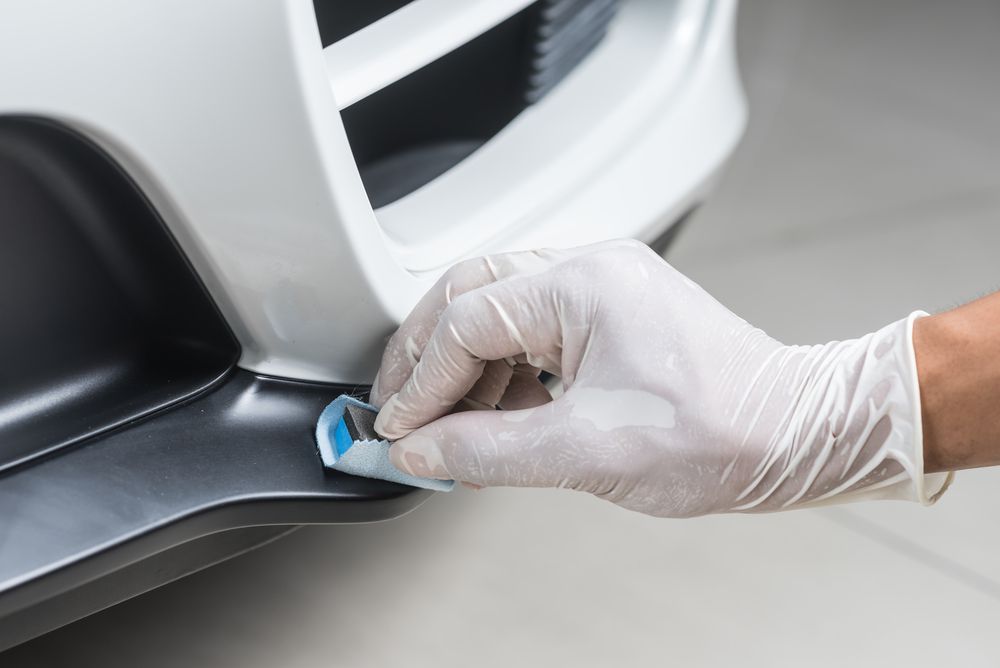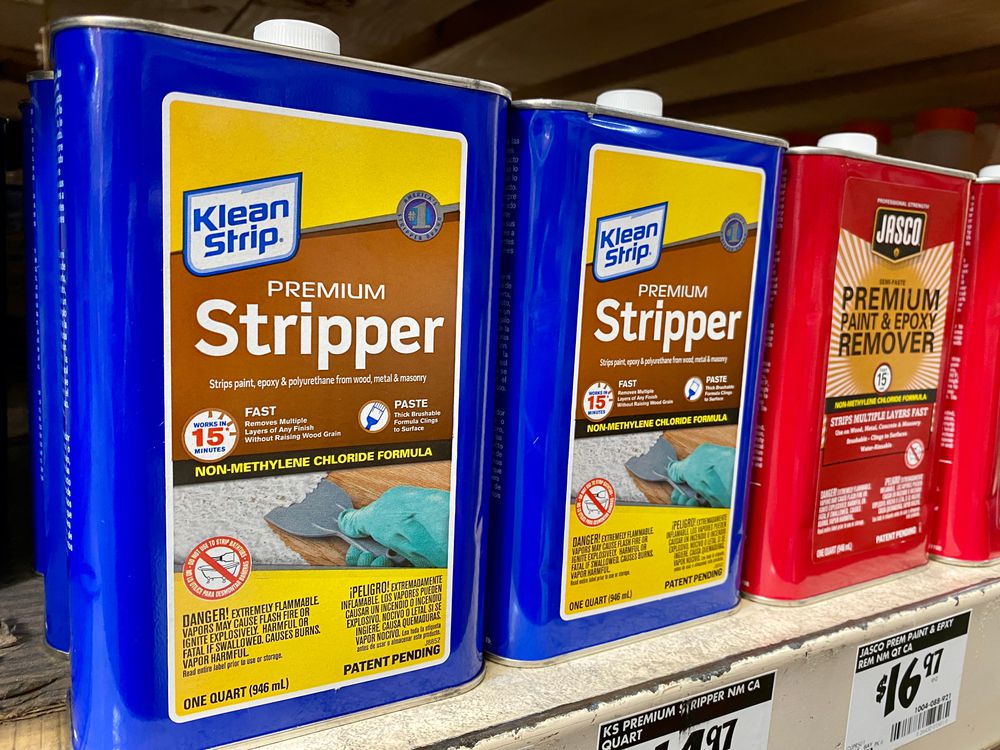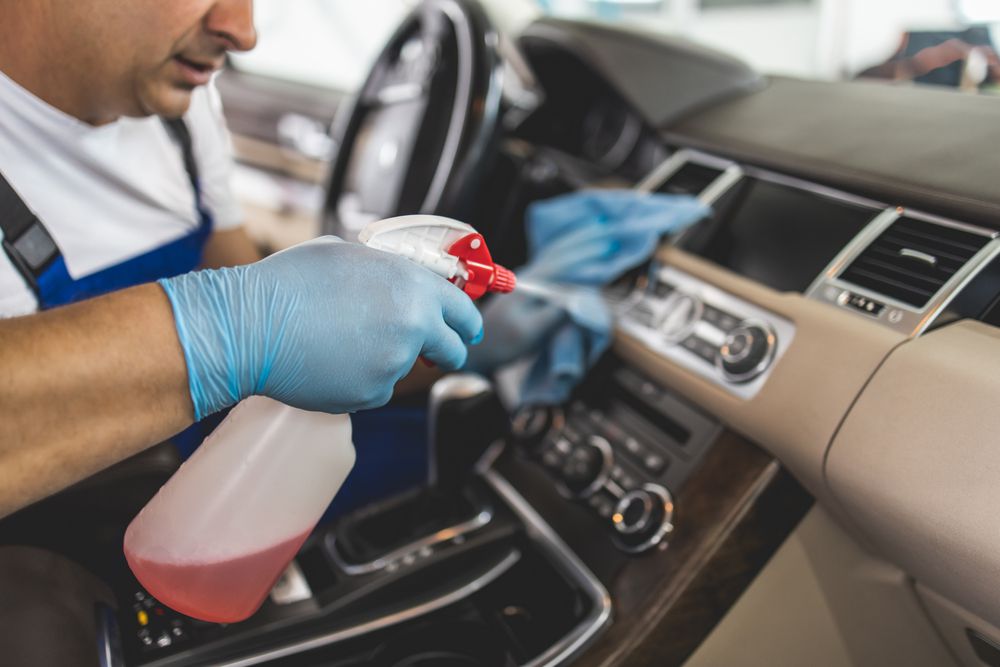Have you ever completed a paint job or paint touch-up on your vehicle, only to realize that you spilled a little on the bumper? Or perhaps you got paint on your car's plastic side panels accidentally.
You can remove paint stains from plastic car parts by washing with soap and water and scraping the paint off gently.
Household solvents such as rubbing alcohol, vinegar, and vegetable oil also work, and you can turn to plastic-safe paint strippers if you need something more powerful.
This guide will cover the steps you should take to remove latex and oil-based paint stains from plastic parts on your car.
We'll also share tips for taking safety precautions and answer frequently asked questions.
 Cleaning paint off plastic parts
Cleaning paint off plastic parts
How Do You Get Paint Off Plastic Car Panels?
When painting a vehicle's body, paint can spill and stain unintended areas, such as trim and paneling.
Luckily, there are some easy ways to remove paint stains from these plastic car parts, including the following:
Using a scraper - use a scraper to chip off dried paint from a plastic car part gently
Using isopropyl alcohol - rubbing alcohol is strong enough to penetrate dried paint and remove it without damaging the plastic surface
Use a paint stripper or paint remover - plastic-safe paint removers and stripping products will clean
Using vegetable oil - this oil works to loosen dry paint, particularly when the paint is oil-based
Using warm vinegar - rubbing warm vinegar can effectively remove paint stains from plastic when the paint is latex
Note that if you're going to scrape, brush, or use any kind of abrasive substance on your car's plastic parts, you need to be gentle so that you don't do further damage.
Can Paint Remover Be Used On Plastic?
Certain paint remover products can include harsh chemicals and thus damage plastic parts on your car.
But some paint removers work well on plastic bumpers and panels, such as GOOF OFF Heavy Duty Remover.
Paint strippers/removers work by breaking down the paint that has stained the plastic part.
Once it has effectively broken through the paint, you should be able to wipe the paint residue away and clean the plastic.
 Paint stripper
Paint stripper
How Do You Remove Paint From Plastic Without Damaging Plastic?
To remove paint from plastic without scratching, you must take precautions, such as only using gentle brushes with natural bristles.
It also helps to reduce damage if you test an area of the plastic with the paint-removing substance before applying it to the whole part.
This way, you can see whether or not the product is truly safe to use first.
Furthermore, you can reduce damage to plastic when removing paint if you only use stripping products designed to be used on plastic.
And you should take care to apply gentle pressure when rubbing, scraping, and scrubbing.
You should first gather your tools - including solvents, oils, soap, water, sponges, scrapers, brushes, etc.
Protect Yourself
Once you've gathered tools, protect yourself by getting work goggles or safety glasses, a face mask if you're using intense compounds, and work gloves.
A mask and glasses protect your eyes and mouth from harsh fumes and vapors.
Start By Washing
Before attempting to remove paint stains from plastic on your car, you should start by washing with soapy water and a sponge or lint-free cloth.
Sometimes, warm water and soap can even remove some of the paint stains before resorting to chemical-based substances and other methods.
Trying soap and water first also may save you money; you can decide whether or not it's necessary to buy any other supplies.
 Cleaning car interior with soap and water
Cleaning car interior with soap and water
Scrape or Scrub
Whether you're using a soft toothbrush or a scraping tool, the next step is physically removing the paint with force.
Scraping or scrubbing is an effective way to chip off dried paint before adding solutions to the mix to break down the paint.
Take care to wipe off dried paint dust or debris as you scrape at it or scrub it.
Use Household Substances
If you still need help getting paint off the plastic, try using vegetable oil, rubbing alcohol, or warm vinegar.
These should be items that most people already have around their homes and in their cupboards.
They're inexpensive and less dangerous ways to remove paint from car plastic.
If you can effectively remove paint from your car plastic with these substances, finish by washing the part with soap and water, then dry with a lint-free cloth.
Use Solvents and Removers
Finally, if all else fails, you can move on to the more powerful paint removal agents, such as strippers and removers.
Ensure the products are noted as “safe to use on plastic” on their labels.
When you've removed as much paint as possible, wash with soapy water, rinse, and dry.
FAQ
Will WD 40 Remove Paint From Plastic
Lubricant products like WD 40 may effectively loosen paint with stained plastic. But this is only
likely if the paint isn't fully dry yet. You'll still have to rub, scrub, or clean the paint off once it's loose.
Does Vinegar Remove Paint From Plastic?
Yes, vinegar can remove paint from plastic car parts, especially if the paint is latex. Because vinegar is an acidic substance, it eats away at the rubber in latex paint.
Does Nail Polish Remover Remove Paint?
Nail polish remover often contains acetone, a solvent substance capable of thinning and stripping paint. But when removing paint from cars, note that the acetone in nail polish will also eat away at the plastic and damage it if your not careful.
Conclusion
Hopefully, our article has helped teach you how to remove paint from plastic car parts.
You can remove paint from plastic car parts on a budget with a few household items, like isopropyl alcohol, vinegar, vegetable oil, and a scraper. For harder-to-get paint stains, try a plastic-safe paint remover or solvent like GOOF OFF before washing the plastic clean.